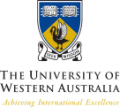PSTVd
Phylogeny, pathogenicity and epidemiology of potato spindle tuber viroid (PSTVd) and related pospiviroids in Australia - Final Report
| Publication Type | Report | |
| Year of Publication | 2012 | |
| Authors | Barbetti, M.; Mackie, A.; Rodoni, B.; Jones, R.; McKirdy, S. | |
| Pages | 13 |
Potato growing areas of Australia are currently considered free of Potato Spindle Tuber Viroid (PSTVd) and this pathogen is classified as an emergency plant pest (Category 3) under the Emergency Plant Pest Response Deed (EPPRD). There were six emergency responses for PSTVd in Western Australia (WA) and New South Wales (NSW) in the six years preceding commencement of this project and the concern was that without any pathway control there would continue to be periodic detections of PSTVd in the future. The importation of tomato seed, which until June 2008 was unregulated, had been implicated as the likely source of PSTVd. However, research at that time from Europe identified alternative hosts of PSTVd as potentially the source of inoculum for PSTVd infected tomatoes. Moreover, research then in WA indicated that both solanaceous and non-solanaceous species might be hosts.
Research outcomes:
This project has determined the extent of Potato spindle tuber viroid (PSTVd) infection in solanaceous and non-solanaceous weeds in Carnarvon, Western Australia; defined the genetic relationships between the strains of PSTVd that occur in Carnarvon and those found elsewhere in Australia; demonstrated how this pathogen is able to survive and spread on contaminated surfaces; revealed the pathogenicity of local PSTVd on potato and tomato plants; and provided key information to allow instigation of appropriate quarantine, disinfection and management protocols to prevent its further importation into and spread within Australia.
Research implications:
The horticultural industries in Australia now have been provided with a clearer understanding of the origins of the PSTVd outbreaks in Australia over recent years. Further, they have been provided with a better understanding of the dynamics of PSTVd epidemics in the field, the sources of infection, how contact transmission occurs, and how survival and infectivity is affected by different material surfaces. Measures that need to be taken at a national, state and industry level to minimise future spread the pathogen within Australia are now better defined (e.g. protocols to ensue seed is free of PSTVd contamination). The findings of this project have significantly advanced Australia’s capacity to safeguard its potato, tomato and other solanaceous plant-based industries. Ongoing work to highlight possible measures for disinfestation of contaminated materials will further enhance Australia’s border security while also helping to secure the future of valuable horticultural exports from Australia.
Acknowledgements:
Horticulture Australia Limited for matching funding, DAFWA for paying half salaries for Martin Barbetti and Roger Jones during this project.
PROJECT DETAILS
Complete
Institution
University of Western Australia
Term
July 2009 - June 2012
Budget
$387,000
PROGRAM DETAILS
CORE CRC PARTICIPANTS
SUPPORTING CRC PARTICIPANTS
This project will investigate the phylogeny, pathogenicity and epidemiology of potato spindle tuber viroid (PSTVd) and related pospiviroids in Australia.
What is the biosecurity problem?
Since 2001 there have been six reported incursions of PSTVd in tomatoes in Australia. In each instance, an intense eradication program has successfully removed the source of inoculum. As a result of these successful eradication programs PSTVd is still considered a quarantine pest of significance in Australia.
It is critically important to Australian horticulture, particularly the potato industry, that Australia remains free of this destructive pathogen. An investigation into the potential entry pathways of PSTVd in tomatoes is therefore required.
Recent research in Europe has suggested that PSTVd infection may be widespread in certain wild solanaceous hosts, and that these infection reservoirs rather than seed transmissions in tomato may be responsible for outbreaks in tomato in different parts of the world. Recent research in Western Australia also suggests that certain wild non-solanaceous hosts may be involved.
The main outputs of this project are to?
- identify the strains of PSTVd and related pospiviroids that are associated with tomatoes in Australia
- assess the pathogenicity of isolates of PSTVd and related pospiviroids found in Australia on tomato and potato
- identify alternative hosts of PSTVd and the role they play in the emergence of PSTVd incursions in tomatoes in Australia
- evaluate the dynamics of PSTVd epidemics in the field, how contact transmission occurs, and the survival of its infectivity on different surfaces and the role of nurseries as potential reservoirs
- determine what types of scientific data are required to support import risk assessments of solanaceous plant products into Australia
- revise containment and eradication strategies for this harmful pests and diseases, and
- train a post graduate student in Plant Virology (viroids) and Plant Biosecurity.
Who will be the end-users of your research?
Office of the Chief Plant Protection Officer, Biosecurity Australia, Plant Health Australia, state and territory department of primary industries, vegetable industries.
STUDENT

Ms Alison Mackie
Student CRC60134: Potato Spindle Tuber Viroid - PhD
amackie@agric.wa.gov.au
Phone: 08 9956 3327
Fax: 08 9941 8334
Read More
PROJECT DETAILS
Active
Supervisor
Professor Martin Barbetti (UWA), Adjunct Professor Roger Jones (DAFWA), Dr Brendan Rodoni (VicDPI) and Dr Simon McKirdy (CRCNPB)
Supervising Institution
University Western Australia
Term
July 2009 – June 2012




